Employer branding is a marketing strategy that helps businesses represent their identity as an employer to current and prospective employees and job seekers as a whole. It involves creating a unique brand encompassing the entire employment experience, from mission and culture to salary and benefits. Strong employer branding strategies can help attract top candidates, boost employee productivity, and increase employee retention.
No matter the size of your small business, your goal is to create an association between the company and positive feelings in employees’ minds. Since brands are interpreted by how they make people feel, developing and cultivating a best-in-class employer brand relatable to as many people as possible is important.
Now that you know what employer branding is, let’s look at how you can build a strong employer brand for your business.
How to Create an Employer Brand in 4 Steps
There are several steps a small business should take to build their employer brand, starting with understanding the elements that comprise an employer brand. Then, the team must determine what its brand is or should be (with participation from all relevant parties, including leadership), communicate that brand internally and externally, and, lastly, evaluate its effectiveness.
Step 1: Understand What Defines an Employer Brand
Current and future employees are trading their time and effort in exchange for pay and the experience of working for your organization. So, it’s helpful to think about your employer brand in terms of an employee value proposition (EVP).
An EVP is your company’s overall value to potential and current employees relative to what other employers are doing. It combines the company mission, culture, benefits, and compensation and is part of a broader employer branding campaign.
Step 2: Determine What Your Employer Brand Is—Or What You Want It to Be
When developing a brand, you should consider a few things:
- What does your company stand for?
- What is your message?
- What are your products/services?
- How do you value your employees?
- How do you measure your success?
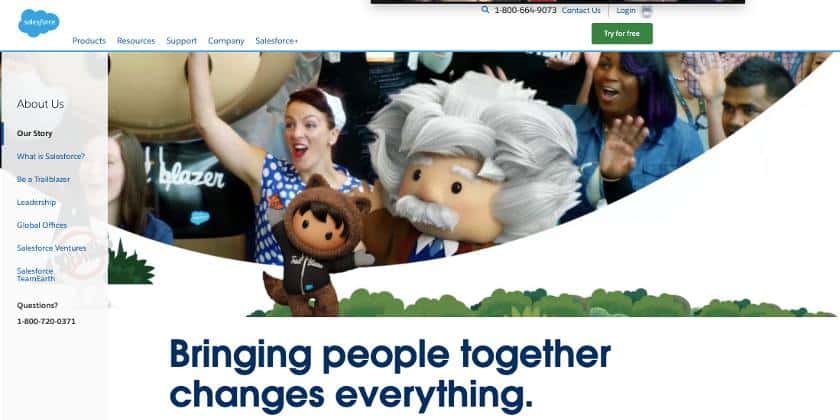
Salesforce has created an employer brand with top ratings for employee retention, office culture, and happiness.
Your employer brand should connect your company, what it stands for, and the products you sell with customers, current employees, and potential employees. The best way to do this is to conduct a competitive analysis showing what your competitors are doing compared to your business. Once you have completed your analysis and identified what makes your company unique, you can use these as the pillars of your employer brand.
Some common attributes that make a company stand out from its competitors are its culture, leadership, values, and mission. By focusing on these key elements, you can build an employer brand that is memorable and attractive to employees.
Have Leadership Team Weigh In
A successful employer branding strategy depends on everyone’s input, particularly your managers and other company leaders. Having buy-in from them will allow you to see an objective picture of your EVP and foster a more concrete plan of how to move forward.
There are several ways to foster buy-in, but making your employer brand part of performance standards is one of the most effective. This allows leaders to objectively measure their own performance against established goals, which helps them determine where they need to improve and motivates them to do so.
Learn more about the top people management skills that can enhance your employer brand.
Step 3: Get the Word Out Internally & Externally
Once you have defined your employer branding goals, you need to plan how to get the word out to current employees and potential hires (for when you’re ready to grow your team). Engaging your team, soliciting ideas and input, and getting everyone (e.g., marketing, operations, and customer service) involved and on the same page are essential for long-term success.
Inform Current Employees
It’s important that your employees are aware of the company’s employer branding. This may be illustrated through everything from your business’s logo and color scheme to the vision and values the company espouses. Check out our guides for some vision statements and values examples you may want to incorporate.
You can send a memo to announce any changes in employer branding and follow through with initiatives that reinforce the brand (for example, hold events for Women’s Day and Pride Month if you want to emphasize inclusion and diversity). Employees aware of the employer brand can put their best foot forward when interacting with customers, other employees, and potential employees.
Market to Potential Hires
If you’re ready to scale and make new hires, you will want to showcase your employer brand to attract talent. Ensure potential hires see why it’s great to work for your company. You can achieve this by discussing important causes to your brand or even including photos of company events on your website and in marketing materials highlighting how you implement your established brand.
Additionally, you can market your employer branding through job postings and social media profiles. Employers can also communicate the company’s goals and objectives to new hires during interviews. Each small business will have different channels to get the message in front of the right people, but here are some common ones.
The first place many potential candidates will go to learn more about your company is review sites. Job boards like ZipRecruiter and Indeed have company profiles where job seekers and employees can leave reviews.
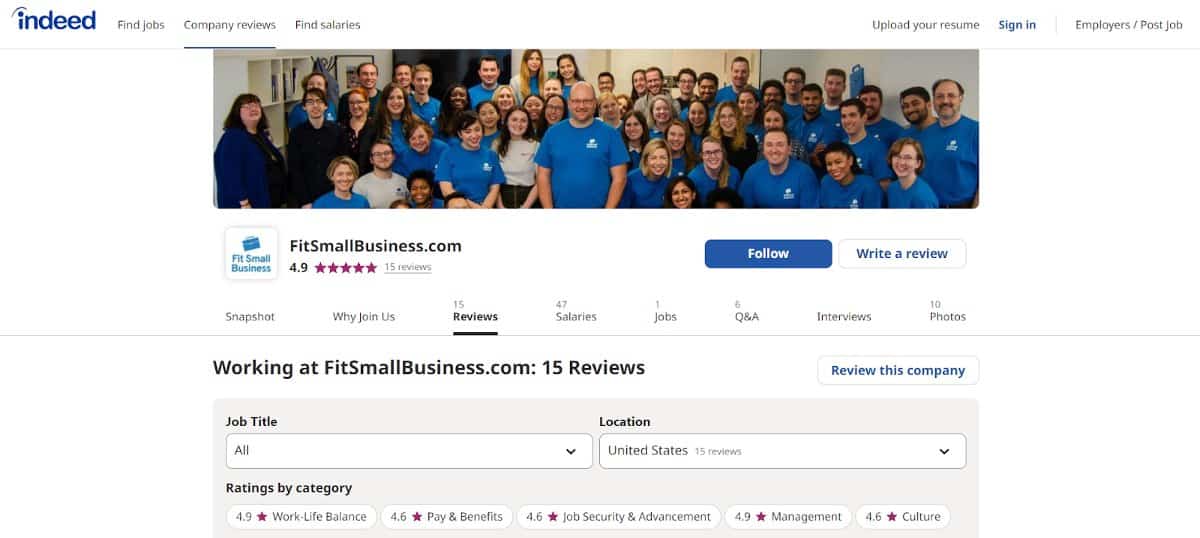
Fit Small Business’ Indeed Review Page boasts ratings and reviews by category.
Make sure you keep your profile information updated, upload photos that show happy employees having fun and doing activities that reflect your brand, and answer any open questions. An excellent place to start is to ask current employees to leave reviews. However, don’t try to game the system and ask a dozen employees to leave reviews at the same time—job boards will flag that as spam.
If you’re like most companies, your business website likely focuses on selling. But if you’re serious about attracting talent, you must incorporate your mission and culture into your home page and throughout the site. A key spot is your careers page. Make sure it reflects the branding you’re after.
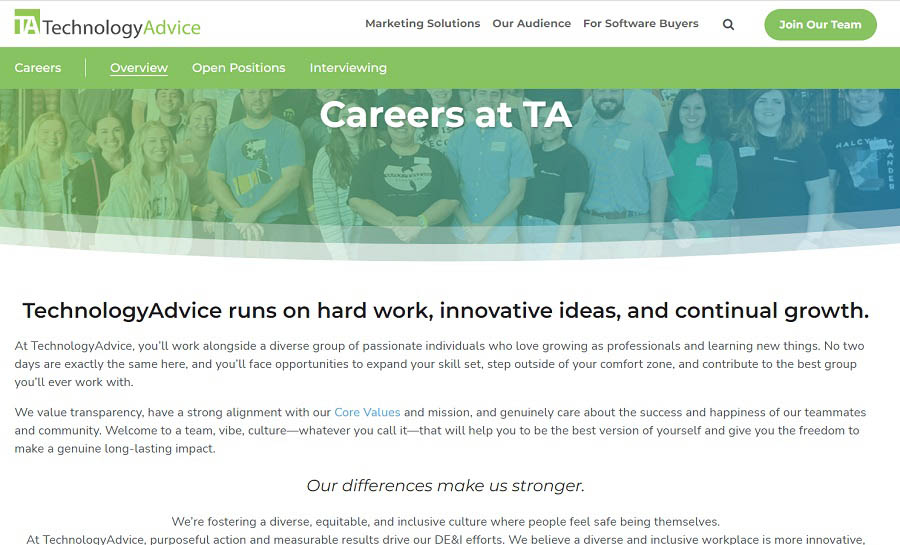
TechnologyAdvice uses its career page to showcase its core values.
For many small businesses, your physical presence is just as accessible as your website. Review all the ways you’re visible to the world, such as uniforms, retail packaging, etc. The goal is to work your employer branding throughout as much of it as you can, alongside your product marketing.

UPS has branded everything from its trucks to its uniforms to its recognizable packaging.
If you’re like most businesses, your postings for job openings have some sort of company background and job description. Posting open positions on a job board can get your company in front of thousands of potential new hires. When creating your job ad, highlight your company culture, benefits, and values.
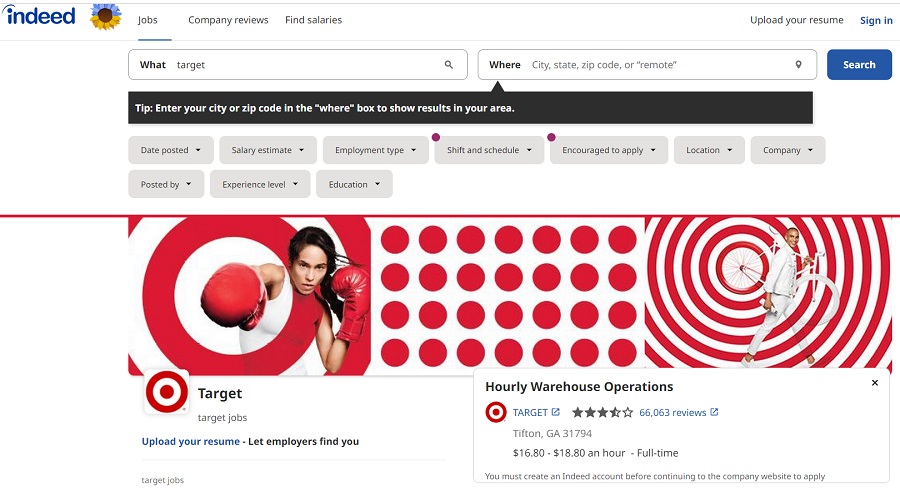
Target is highly recognizable on job boards like Indeed.
Job fairs, which can be held at high schools, college recruiting events, and even military facilities, are a great way to increase employer branding. These events allow employers to meet potential employees, display their company culture, and attract new candidates.

With clear branding and a large “apply today” sign, your business can welcome new talent at job fairs.
Here’s where you really want to make sure you’re using your authentic voice and focusing on showcasing your overall company brand, not just marketing messages. Instead of posts that simply display your products, use social media to support your culture and activities.
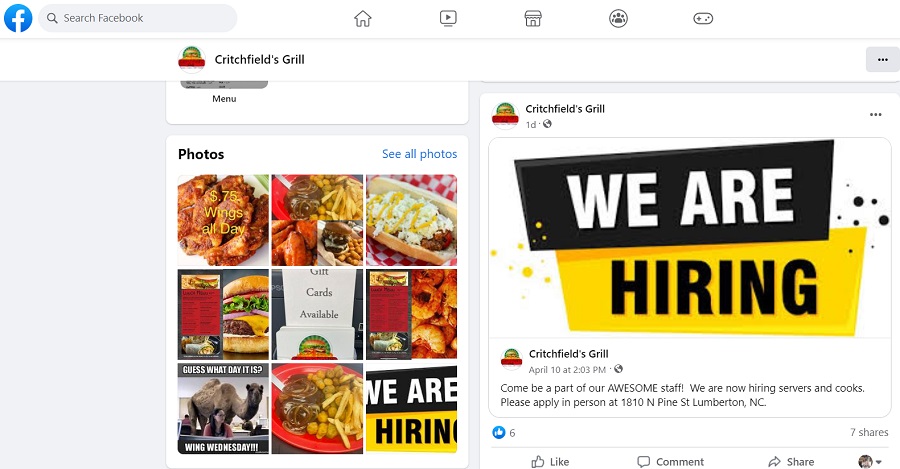
Restaurants can use social media to promote their brand, menu items, and hiring opportunities.
A very effective way to market your brand to potential employees is through current employees, one reason strongly communicating your employer brand internally is important. Establishing an official employee referral program takes that one step further by actively encouraging your employees to reach out to potential candidates and rewarding them for doing so. A happy and motivated employee with a clear understanding of the employee value proposition can relay firsthand to friends, former colleagues, and others in their network what makes your company a great place to work.
There are several national and state contests where your company can be listed as a “Best Place to Work.” This will give your employer brand a boost.
Step 4: Measure & Evaluate the Effectiveness of Your Employer Brand
There are two main elements to consider related to your employer branding strategy: how effective you are at delivering on your perceived brand (internal) and how well you are at getting the word out (external). Your long-term plan should include periodic reviews and adjustments to ensure your small business is effective over time.
There are additional HR metrics that can also be a good measure of the success of your employer brand.
Employer Branding Tips for Retention & Attraction
A well-developed branding strategy can help you reduce turnover and attract new talent by creating a unique identity for your company. We cover some tips to help you achieve that.
Retaining Employees
Brand equity, or the value of your brand, is key to the success of any business. Establishing a strong foundation and embracing authenticity are two ways you can build that brand equity to retain current employees.
Build a Strong Foundation
As an employer, you must think beyond the simple task of filling a job opening with the best candidate. You need to build a strong foundation for your company culture and retain employees by using employer branding. This can be done by creating a recognizable logo, building an engaging employee website, and having a corporate mission statement.
Employer branding can create a sense of community among employees, which can lead to loyalty and a willingness to stick with the company. Additionally, strong employer branding can solidify a company’s competitive position.
Be Authentic
Trying to be something you’re not can lead to failure. To be successful, it’s important to stay true to your brand and its values. This will help you build trust with customers and create a loyal following.
Brand loyalty is not only essential for customers but also for employees and shareholders. By staying true to your brand values, you’re ensuring that your products and services are consistent with who you are as a company and that you’re providing what your customers want. This commitment to quality will help keep current employees happy.
Learn more about employee retention metrics in the workplace.
Attracting Talent
Creating a desirable image or employer brand is a great way to attract candidates. We’ve already discussed the importance of company mission and culture, employee referrals, and more in attracting great candidates. You should also establish clear job duties and responsibilities and tailor your messaging.
Develop Clear & Concise Job Descriptions
Companies should create job descriptions tailored to their company culture and business needs. By using job descriptions, they can communicate their values, goals, and expectations to employees.
Additionally, job descriptions can help identify key skills and abilities needed for the position. Employees and candidates can refer to this resource for information and confirm expectations. Once you have an effective job description, share the information and post recruitment ads.
Be sure to post your job ads to job boards that gain a lot of visibility, such as Indeed or ZipRecruiter. This will ensure your employer brand reaches your intended audience. For more information, you can check our review of Indeed.
Tailor Brand Messaging
The more specific you can be in your branding strategy, the more you’ll benefit from it. Instead of saying “We’re a great company to work for,” you need to talk specifics.
Take a look at your current and future skill needs. Do you need customer service reps, engineers, designers, or salespeople? Often, different types of employees value different things. Designers might want creative freedom, whereas salespeople look for a fast-growing company.
You want a cohesive employer branding strategy but may want to tailor your message and choose varied channels as you try to reach different talents. For example, you might have a message about intellectual challenges when recruiting at an engineering school or emphasize a flexible work environment for customer service personnel.
Are you looking for an effective and efficient way to hire employees? Check out our in-depth guide on how to hire employees for more information about the process.
Employer Brand vs Company Brand
While your employer brand relates to how people perceive you as an employer, your company brand is broader. It includes traditional sales-related branding efforts and how the public perceives all aspects of your company. However, there is often an overlap between your employer brand and sales marketing efforts.
Employer Brand | Company Brand |
|---|---|
Focuses on employee engagement | Focuses on customers |
Promotes inclusivity | Promotes your company’s brand name |
Emphasizes growth opportunities | Emphasizes corporate social responsibility efforts |
Internal/employee-focused | Product- and services-focused |
Bottom Line
Employer branding for small businesses is important to attract top talent to your company and retain the best employees that you already have. By creating a strong employer brand, you can show potential employees what it’s like to work for you and convince current employees that your company is the best place for them to grow their careers. This improves your company’s image and increases its competitiveness.